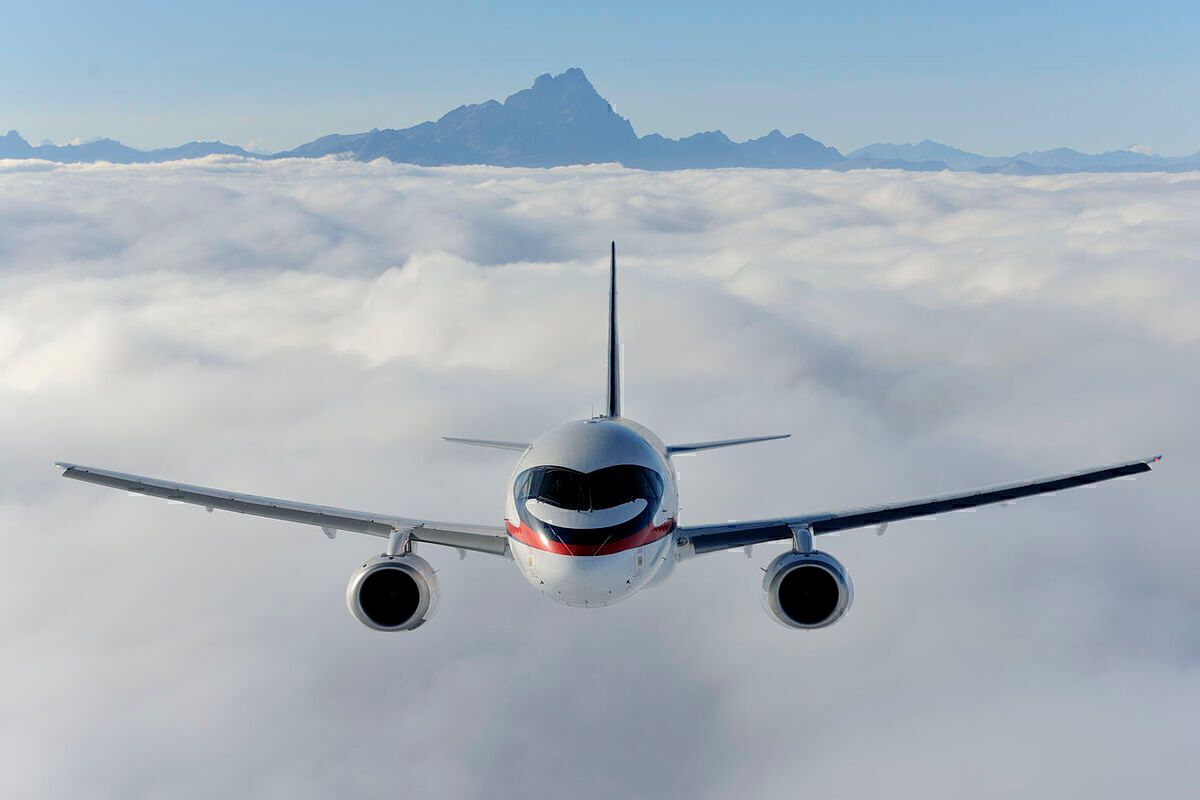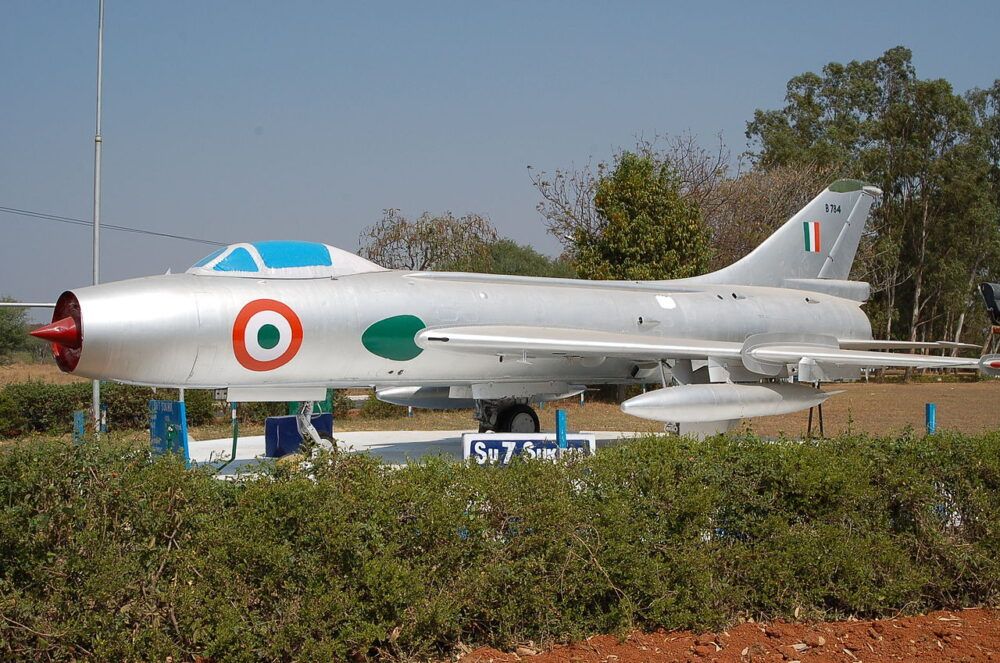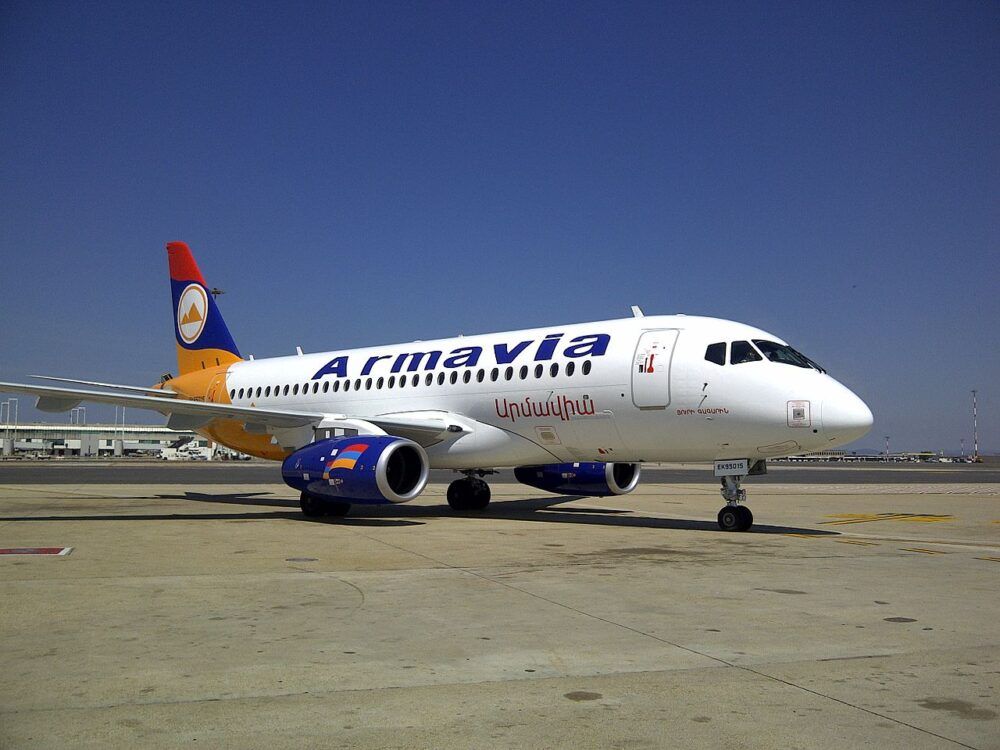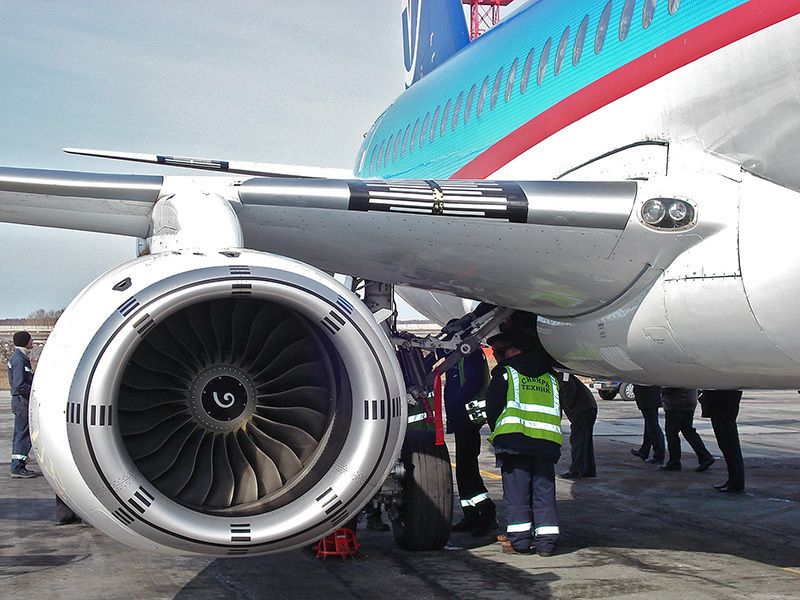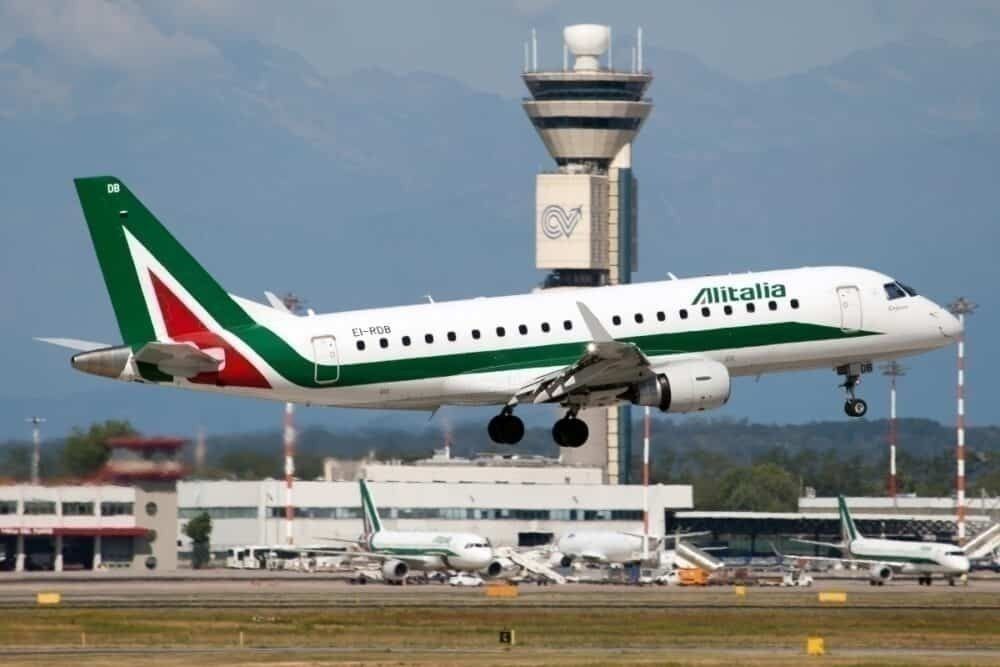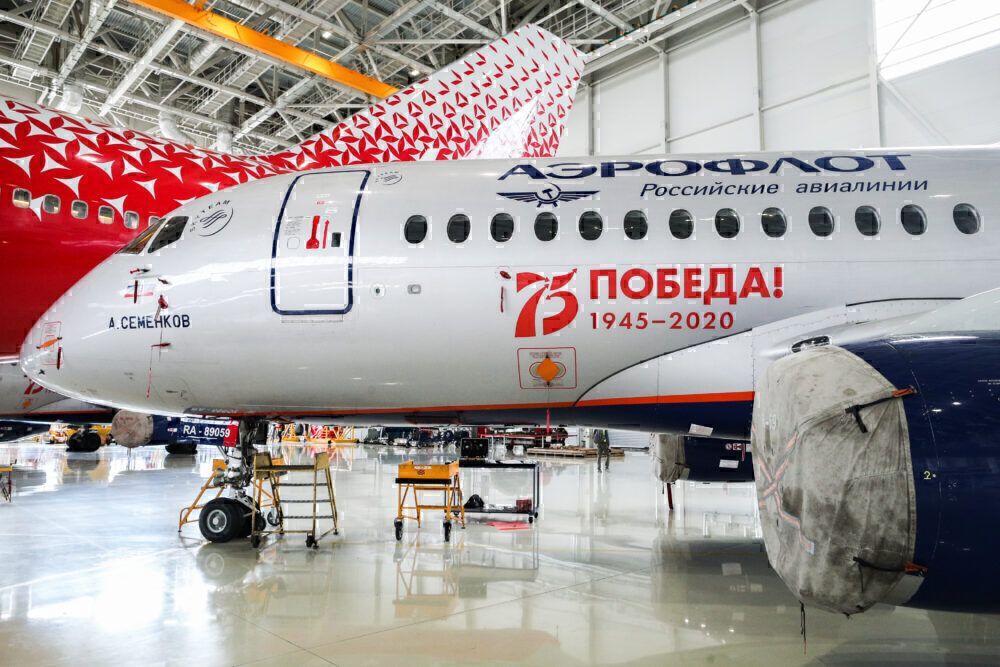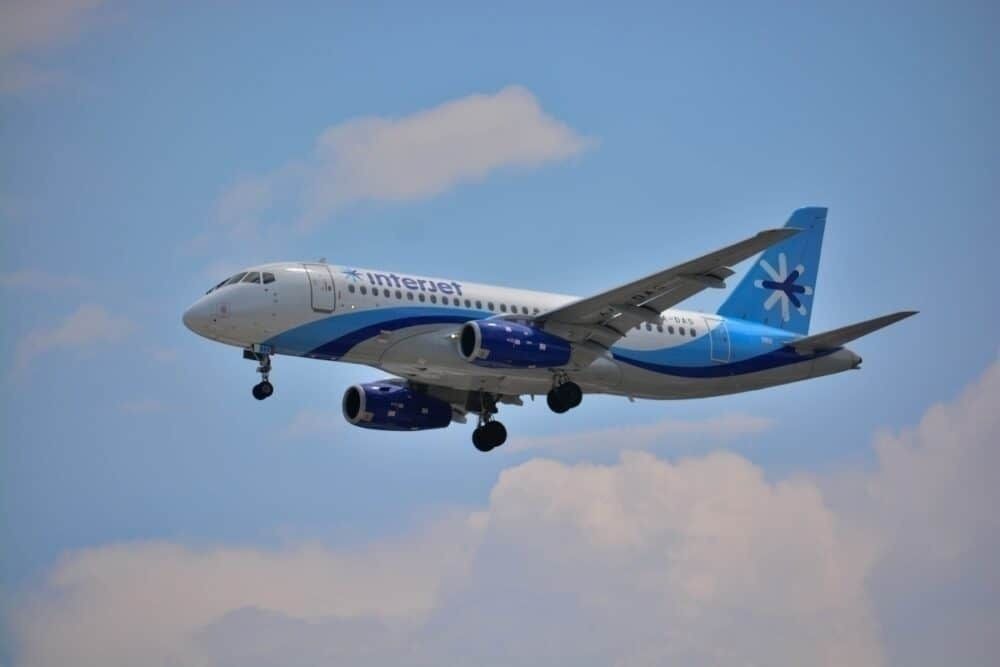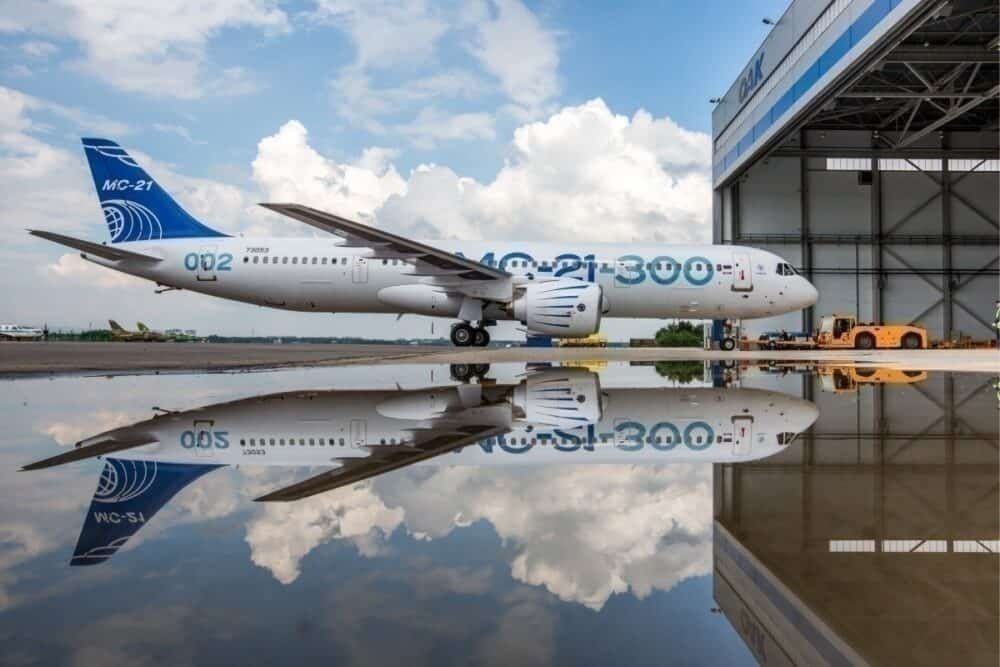The Sukhoi Superjet 100 is a regional jet built by Russian state-owned manufacturer Sukhoi, in service since 2011. It has been sold mostly to airlines in Russian and surrounding countries. But it has been used by one airline in Western Europe and one in the Americas. Here, we explore its background, current service, and future prospects.
Launching the Sukhoi Superjet 100
The Russian manufacturer Sukhoi was founded in 1939 as a manufacturer of military aircraft. It moved into civilian aircraft in the late 1990s. In 2001 was funded by the Russian government to start design on a commercial passenger aircraft, considered an important development for its aviation sector.
Three variants of a regional jet (with capacities between 60 and 98) were originally looked at. These were known as Russian Regional Jet (RRJ) 60, 75, and 95. But in 2005, it was decided to focus on just the higher capacity model, with the other two deemed less cost-effective. Boeing was involved in the design and construction, providing engineering services as well as marketing, supplier management, and customer support.
Once only one variant was chosen for development, the name was changed from RRJ to the Sukhoi Superjet 100. Several Russian companies were involved in part manufacture and supply. The aircraft's final assembly takes place at the Komsomolsk-on-Amur Aircraft Plant in the East of Russia (this is the country's largest aircraft manufacturing plant).
The first aircraft was unveiled in September 2007, and internationally at the Paris Air Show in 2009. However, it did not enter service until April 2011, after engine problems caused delays in certification.
Stay informed: Sign up for our daily and weekly aviation news digests.
Sukhoi Superjet 100 specification
The Sukhoi Superjet 100 offers a typical two-class capacity of 87, although this is stretched to 108 in a dense single class configuration. It has a range of 3,048 kilometers, and the long-range (LR) model has a range of 4,578 kilometers (the LR model adds extra fuel tanks in place of cargo space).
It uses PowerJet SaM146 engines, built as part of a joint venture between French manufacture Safran and Russian manufacturer NPO Saturn.
Competing with Embraer and Airbus
As a regional jet, the Sukhoi Superjet 100 competes closest with the Embraer E170. It could be argued it also competes with the Airbus A220, but with the capacity of the smaller A220-100 being up to 135, it falls quite short.
There are some significant differences in specifications. The SSJ100 seats up to 108, compared to 78 on the E170. Its range of 3,048 kilometers is beaten by the E170 at 3,982 kilometers. Simple Flying took a look previously in more detail at the differences.
The situation gets more complicated if you consider other factors. Its limited global expansion limits the SSJ100, whereas Embraer aircraft are in use worldwide. This can affect the availability of support, engineering services, and parts. European airline Cityjet cited this as a major reason for dropping the aircraft from its fleet.
Another factor is the safety record of the SSJ100. To date, it has suffered three hull losses. While these were all attributed to pilot error rather than technical problems with the aircraft, it will still be a consideration when considered by airlines.
Growing orders
As of January 2020, 302 SJ100 aircraft have been ordered, with 175 built. The first order for the Sukhoi Superjet 100 came from Russian airline Aeroflot. It ordered 30 aircraft in 2005. This failed to stimulate huge demand from other airlines, with just a trickle of small orders from regional airlines for the next ten years.
This changed though in 2018, with a further order for 100 aircraft from Aeroflot. If this order holds after the difficulties in 2020, it will be a major boost for the aircraft's future prospects.
Almost all orders have been from Russian airlines or those in surrounding countries. Notable exceptions, though, include European airline CityJet and Mexican airline Interjet. These were great overseas expansions for Sukhoi, but unfortunately, both have run into difficulty. You can see a full list of operators in this Simple Flying article.
CityJet operated seven aircraft from 2016/17 (according to reporting by AeroTime). These were for some time wet-leased to Brussels Airlines. It returned the last of these to its lease owner in 2019, leaving no operators in Western Europe.
Interjet has been the only operator in the Americas, and up to the start of 2020, it operated a fleet of 20 Sukhoi Superjet 100 aircraft (alongside the A320). It had planned to phase these out from the start of the year but had to change this after financial problems led to the repossession of some of its A320 fleet.
With the company now in bankruptcy, the future of the SSJ in this region is looking increasingly bleak.
Future plans for the aircraft
With the 2018 order for 100 aircraft from Aeroflot, there is still life left in the SSJ100. How much depends on whether it receives further orders.
There has been previous discussion about offering different sized variants, but Sukhoi has not confirmed this yet. Sukhoi has proposed a Sukhoi Superjet 130NG, which would offer a capacity of up to 130. This would compete with the larger Embraer regional jets as well as the Airbus A220. And it would bridge the gap in Russian built aircraft between the SSJ100 and the larger Irkut MC-21. A smaller, 75 seat version has also been discussed.
And thinking bigger, Russia is of course involved in plans to build a widebody aircraft to compete with Boeing and Airbus. Russian and China are cooperating on design of the CRAIC CR929, expected between 2025 and 2027.
Would you like to share any thoughts or experiences of Russia's aircraft? Have you flown on the Sukhoi Superjet 100? Let us know in the comments.

